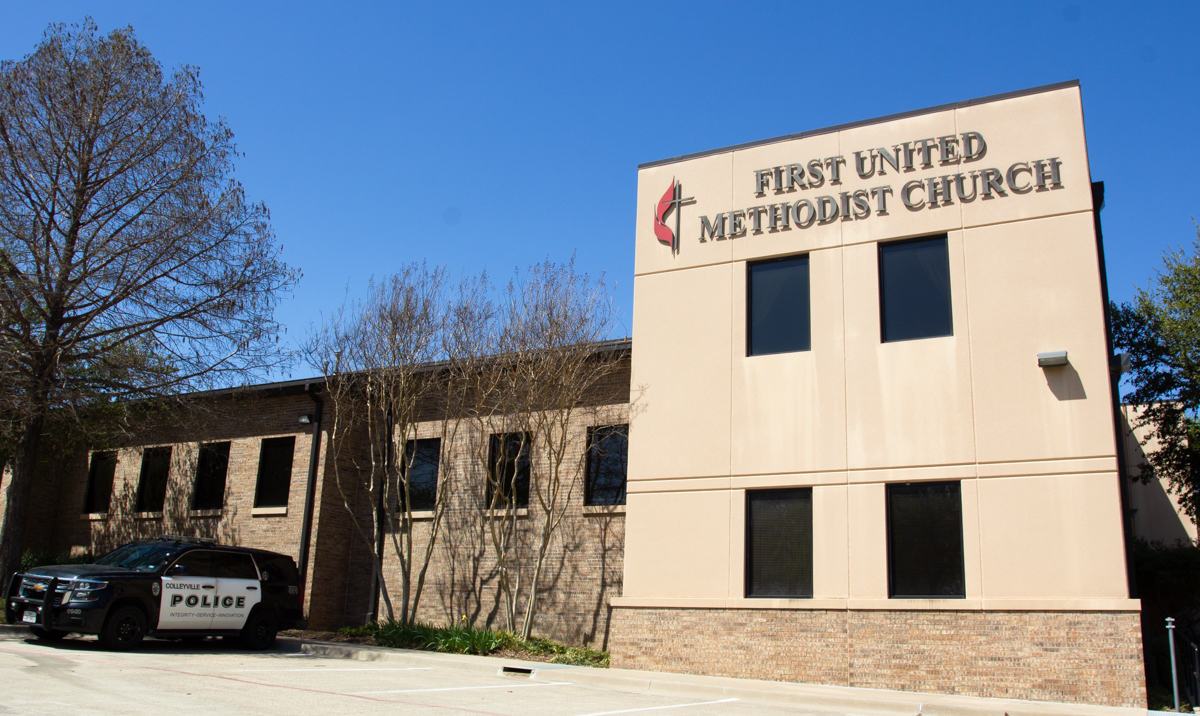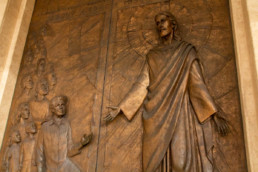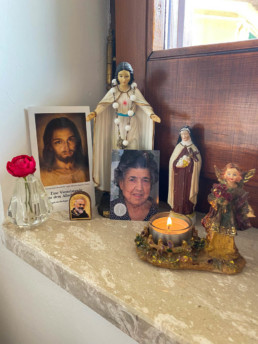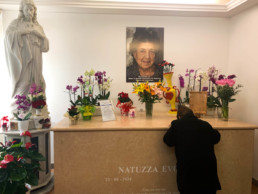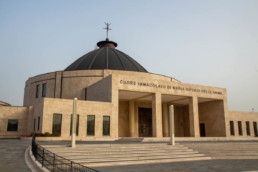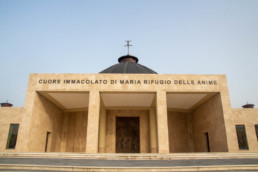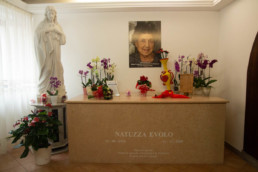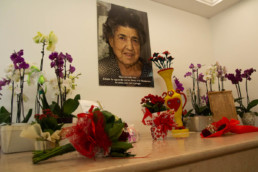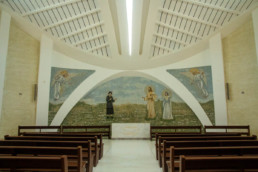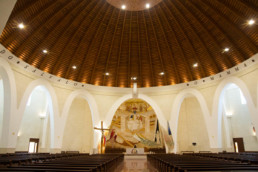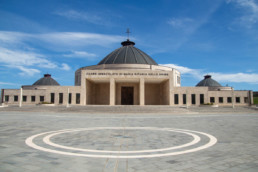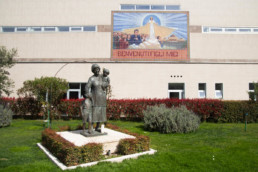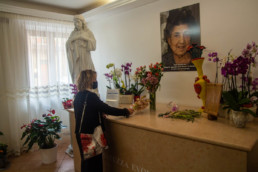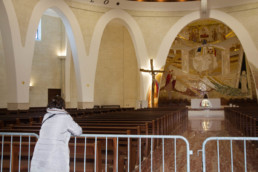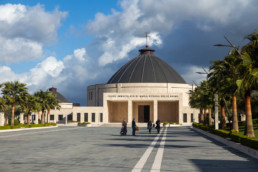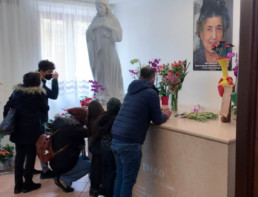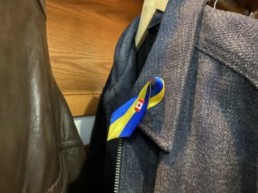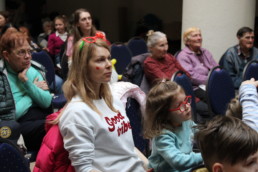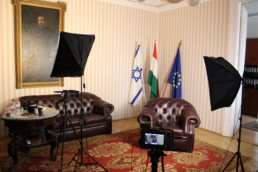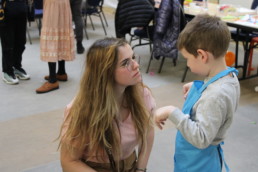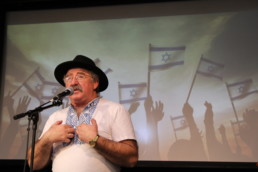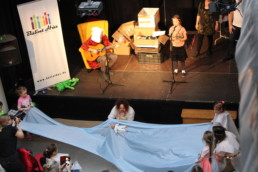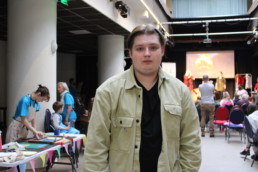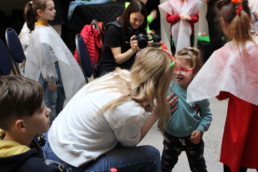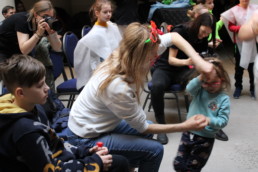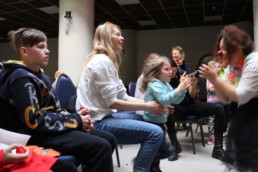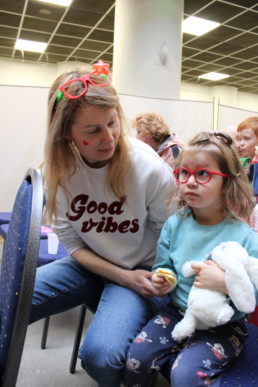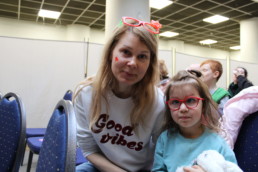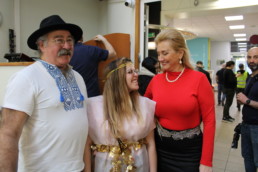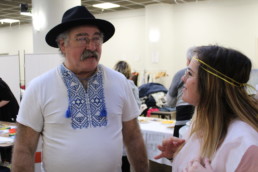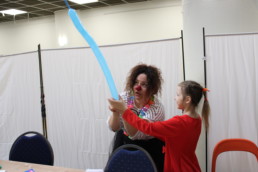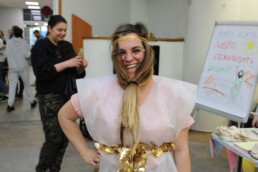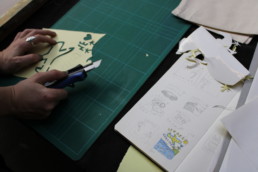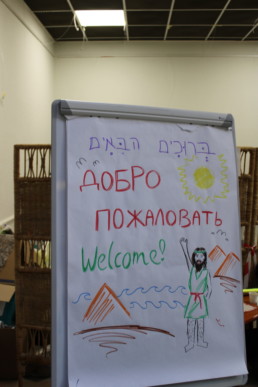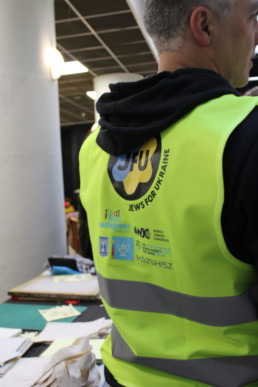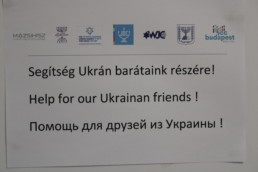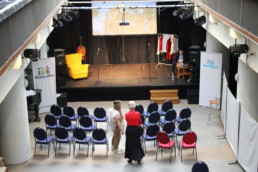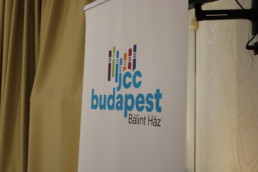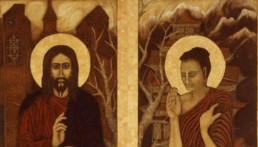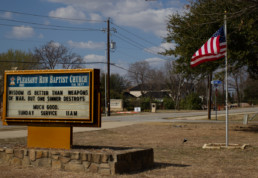A Great Mystic of our Time: Natuzza Evolo and the Catholic Church
Paravati, ITALY – When Fortunata Evolo, a 20th Century Italian mystic, was alive, thousands would come to this little village in Calabria to seek her guidance, inspiration and healing. She claimed to have apparitions of Jesus and Mary and said that she was able to communicate with the dead.
After her death in 2009, the pilgrims kept coming, declaring that she continued to perform miracles from her heavenly abode. They prayed at her tomb and finished building the “Villa of Joy,” a complex of buildings that Evolo said appeared to her in a vision. In 1944, she said, the Virgin Mary told her to build a church, a youth center and a senior center to help the people in need.
Evolo, known as “Mom Natuzza” by the faithful, is more than a local hero. Devotees all around the world, especially in Italian immigrant communities, have photos of her on their bedside tables and recite the rosary following her teachings.
Natuzza was treated as if she were a saint of the Catholic Church. In reality, she is not, but the Vatican is conducting a process whereby she may become one in the future.
Her cause for sainthood officially began three years ago, on April 6, 2019, when the Vatican initiated the process, which will conclude when the Congregation for the Cause of Saints decides on her sanctity or not. These proceedings are usually very long; the one for Saint Pius’ took 19 years.
The Vatican appointed an ecclesiastical tribunal to ascertain Natuzza’s alleged spiritual gifts during this very delicate process. “An ecclesiastical tribunal was set up to gather testimony and acquire documentation to make her a saint,” said Pasquale Anastasi, the Immaculate Heart of Mary Refuge of Souls Foundation president.
However, it seems that the faithful do not need an official declaration from the Vatican to recognize the spiritual powers and gifts of Natuzza. They continue to flock every year to Paravati, in the region known as Calabria, to pray for her intercession.
I grew up making regular visits to Calabria. I know the region and the unique religious dedication of the people who live here very well. This spring, I set out to explore the Natuzza causes. I traveled to Paravati and Mileto, visiting the places where Natuzza lived and professed her faith, spending her life in the service of others. Among these places is the “Villa of Joy,” which is formed by the church dedicated to the Immaculate Heart of Mary Refuge of Souls, a rest home, and a center for young people built according to Natuzza’s wishes. She said that the Virgin Mary herself told her just what the architecture of the church should look like, together with the other buildings of the Villa.
“There will be a large new church called the Immaculate Heart of Mary Refuge of Souls and a home to alleviate the young, the elderly, and those others who find themselves in need.” These were the words that Natuzza said were told to her by the Virgin Mary in 1944 and that are part of her spiritual testament.
Natuzza was like a mother to many and a spiritual guide to shelter from suffering. On this trip, I learned about the many paranormal experiences associated with her, the great humility she is remembered by the faithful, and the various misunderstandings that arose around her figure that led to her being locked in an asylum as a child and undergoing an exorcism, according to the testimonies.
Natuzza lived in Paravati from her birth in 1924 until her death 85 years later on November 1, 2009. Belonging to a large family that could not afford to send her to school, she grew up as an illiterate woman without religious instruction. Despite this, “she knew the catechism better than I did, who was her parish priest,” said the Rev. Don Pasquale Barone, 83, one of the two spiritual fathers who accompanied her throughout her life. “She had been taught everything directly by Jesus and the Virgin Mary,” he concluded while we were in one of the rooms of the foundation’s building inside the “Villa of Joy.” There, Barone spends most of his time, since it gives him a feeling of peace and serenity.
According to Paravati’s community and the people who have always remained close to her, like Barone, Natuzza has always been a poor and modest woman. Phenomena that cannot be explained scientifically were associated with her, making Natuzza, in the words of Barone, “a great mystic of our time.” And only mysticism could explain how an illiterate woman could hold conversations with university professors and academics, he said.
However, things around her figure and the spiritual guidance Natuzza left when she died have not always gone smoothly. According to Barone, in 2017, the bishop of Mileto, Luigi Renzo, prohibited Natuzza’s foundation from holding masses in the Immaculate Heart of Mary Refuge of Souls’ church due to some disagreements on who was to take care of Natuzza’s will. The church was already completed in July 2016, but the masses were forbidden to be held because of these problems. “We had a three-year ban on worship activities,” Anastasi said. Following the Vatican’s intervention, Pope Francis installed a new bishop last year, Bishop Attilio Nostro.
The church Immaculate Heart of Mary Refuge of Souls will be consecrated and officially opened for worship by the faithful this summer, an event for which pilgrims worldwide are expected.
Among the numerous phenomena connected to her were the apparitions of Jesus, the Madonna, angels, saints, and the dead, which the Church initially saw as symptoms of madness or the devil. According to Barone, Natuzza was exorcized when she was young and sent to an asylum. However, the apparitions did not disappear, and over the years the Church began to reassess its opinion of Natuzza.
Also linked to Natuzza was bilocation – being in two places simultaneously -, and the formation of stigmata on her skin during Holy Week. “According to us (the sores) were her participation in the suffering of Christ,” said Father Michele Cordiano, 64, while sitting on a bench in front of the Immaculate Heart of Mary Refuge of Souls Church. He is the other priest who was close to Natuzza for years and witnessed these events firsthand. “But the strongest suffering was the one she lived inwardly,” referring to Natuzza’s sharing Jesus’ suffering caused by the atrocities that affect humanity.
Several testimonies also attributed to her the ability to diagnose exact diseases and suggest the best treatment. “She would appear to us in dreams and tell us the medicines Francesco needed to take, and we would report to the doctors. And she was always right,” Natalina Scuteri, the mother of a young man named Francesco Fogliaro, told me.
After a severe motorcycle accident in 2007, Fogliaro was in a vegetative coma for two months. According to Scuteri, even his awakening was the work of Natuzza, who had reassured her that her son would survive. Scuteri said she strongly opposed the doctors when they wanted to disconnect the machines that kept Fogliaro alive during his coma because Natuzza told her to do so. “Thanks to Mom Natuzza, Francesco is alive.”
Like Scuteri, thousands came to Natuzza or for medical advice, or to get in touch with the deceased, or even for the sole purpose of receiving words of encouragement in difficult times. According to the Rev. Cordiano, Natuzza would welcome approximately 300 people a day into her humble home in Paravati. “She always wanted to speak face to face with people, never in public. So it remained a very confidential dialogue,” he said.
Cordiano explained her appeal. “People felt accompanied by the wisdom of the things Natuzza offered and the certainty that her prayer was true. It was an accompaniment, always so that the person would find serenity and find peace and balance. (…) They felt taken by the hand of a mother.”
And it is this gentleness in guiding people and her humility that is remembered first. “The impression she left was that of a mother who had just welcomed a family member, a child, into a dialogue that was often dramatic in tone, but the outcome was always a rebirth,” said Bishop Nostro. “The encounter with her was to the core an Easter encounter.”
Still today, Natuzza assumes the role of spiritual guide not only for the pilgrims who go to the small village of 6,500 people to pray at her tomb. Prayer groups dedicated to her are worldwide, formed mainly through Italian immigrant communities. “Here in Italy, there are about 400 prayer groups,” said Cordiano. “In Long Island in New York, there are perhaps more than twenty, two in Australia in Sydney and Adelaide and some in Toronto.” According to him, the formation of these groups “is an invitation to recover the dimension of the community of faith, and feel the presence of God.”
Emerita Cretella, an Italian anthropologist, defines Natuzza as a “living ritual” in the experience of Catholicism since she generates a change in the person. The individual who suffers the disintegration of today’s society asks for help from Natuzza, who helps in their reconstruction process. According to Cretella, the figure of Natuzza, seen as a spiritual intermediary and a point of conjunction with the divine, is a reassurance for the person.
Valerio Marinelli, former professor of technical physics at the University of Calabria and nuclear engineer, has studied the “Natuzza phenomenon” since 1976, interviewing thousands of people and investigating mainly the alleged bilocation of the Calabrian mystic. Initially skeptical about the truthfulness of the phenomena associated with her, Marinelli, after hearing the numerous testimonies, has reconsidered his opinion.
Marinelli has published 12 books in which he speaks about Natuzza. The eleventh contains only testimonies of doctors who “have both verified in person that the mystic phenomena linked to Natuzza were not scientifically explainable,” he said.
“There is not a day that I do not invoke Mom Natuzza. I call on her to assist me in family problems, on children, on the sick and people in need,” Anastasi said.
“Through the saints, Jesus continues to manifest himself in some way. The saints are a model for us who accompany us in life,” Marinelli said. “They are a model, intercessors with the divine, and they help us.”
Meanwhile, the cause to verify Natuzza’s sanctity ordered by the Vatican continues.
No one is expecting it to be completed this summer. Meanwhile, on May 8th, the day of the mother and the Virgin Mary in the Roman Catholic Church, a mass dedicated to “Mom” Natuzza will be held in Paravati. Similarly, on May 15th, a mass in Italian dedicated to her and the Virgin Mary will occur at St. Rocco Parish in Glen Cove. There, 25 years ago, was founded one of New York’s cenacles dedicated to Natuzza.
“For me, she is a saint; for me, there is no need for her to be declared and put on the altar. Because she was a humble person, and when she looked at you with those eyes, she read your soul and heart,” said Josephine Carbone, a Long Island resident, who met Natuzza almost 55 years ago and never let her go.
Edmonton Church Rallies for Ukraine
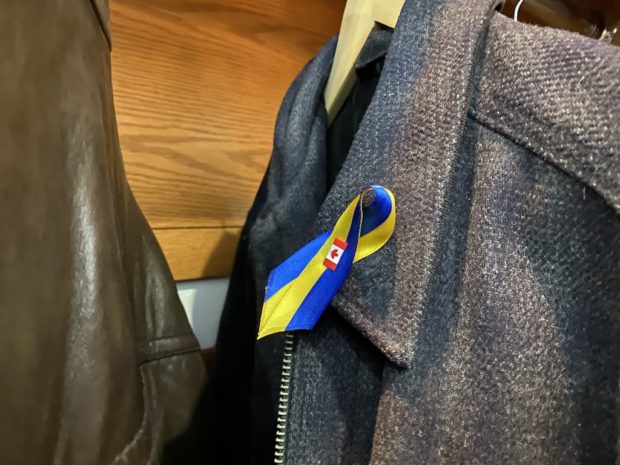
Listen to audio story: Edmonton Church Rallies for Ukraine
Click here for audio story transcript
(Originally aired April 28, 2022)
How I Got This Story:
On my flight into Edmonton, I sat next to a Canadian photographer returning home from a trip to Europe. He’d visited Poland and Ukraine, taking pictures of refugees at the border between the two countries. As we flew over the snow-covered plains of Alberta, he looked out the window and said, “Yep, this is what Poland looks like.”
I was heading to Edmonton to find out how Ukrainian-Canadians there are responding to the current war in Ukraine, and how they’re welcoming the new arrivals who’ve fled the violence. I knew, on a surface level, that Eastern Europe and Western Canada can both get bitterly cold, but it hadn’t occurred to me that the two places, halfway around the world from each other, might actually look similar from the sky.
In fact, as I learned from historian Jans Balan, director of the Kule Ukrainian Canadian Studies Centre at the University of Alberta, the Canadian government actively recruited Ukrainians to come and farm the cold Canadian prairie in the late 19th century. Canada even instituted a law similar to the United States’s Homestead Act — if settlers would come and cultivate a piece of land, then they could have it. Because of similarities in weather and topography, Ukrainians could grow the same crops in Canada as they’d grown back home. It was a natural fit.
Many Ukrainians took the opportunity, and today there are Ukrainian communities in Canada that go back four or five generations. Outside Ukraine and Russia, Canada is home to the largest population of Ukrainians in the world.
Though the current war in Ukraine is entering its third month, the United States did not announce a formal plan to admit people fleeing Ukraine until late April. Canada, on the other hand, began granting three-year residence to Ukrainians in mid-March.
My beat for the Covering Religion seminar is Orthodox Christianity. Since Russia’s assault on Ukraine began soon after our class started, I’ve focused on New York’s Ukrainian Orthodox churches, reporting on one on the Upper West Side and one in the East Village. New York has the largest Ukrainian population in the United States, but Ukrainians here are not nearly as visible as they are in some towns and cities in Canada.
More than 100,000 Ukrainians live in Edmonton, making up more than 10 percent of the city’s population. In 1983, the Edmonton Ukrainian community created the world’s first-ever monument to the Holodomor, a famine that killed millions of Ukrainians under Joseph Stalin 50 years earlier. The monument stands outside Edmonton’s City Hall, not far from another one dedicated to Alberta’s Ukrainian pioneer women. This other statue — the bronze “Madonna of the Wheat” by sculptor John Weaver — wears her hair atop her head in a traditional Ukrainian braid.
Many of the city’s Ukrainians attend one of five Ukrainian Orthodox churches. (Some instead attend St. Barbara’s Russian Orthodox Cathedral, which was founded by Russian Orthodox missionaries to serve Edmonton’s Ukrainian community in 1902, though I learned that some St. Barbara’s members, wanting to distance themselves from the Russians, have been visiting Ukrainian churches since the war started.)
The largest of Edmonton’s Ukrainian Orthodox churches is St. John’s Ukrainian Orthodox Cathedral. The Rev. Cornell Zubritsky, a priest at St. John’s, was my primary contact. I found his phone number on the cathedral’s website, and he told me he’s a member of a committee assembled by the Ukrainian Orthodox Church of Canada to coordinate the national church’s response to the war. (Zubritsky grew up north of Edmonton, in the town of Vegreville, where, he said, even non-Ukrainians speak with slight Slavic accents.)
Zubritsky was the one who told me about the airport welcome booth the Edmonton Ukrainian community has organized to welcome refugees from the war. He himself has taken shifts at the booth, and many others who attend the cathedral have, too.
When I got to the airport, I sat at the welcome booth for about an hour. (No one arrived from Ukraine, so I talked with Svitlana Fizer, who was staffing the booth, and she taught me the Cyrillic alphabet.)
The next day, I interviewed Zubristky and attended a welcome event for newly-arrived Ukrainians at the Ukrainian National Federation building. I met one young boy, Artom Yershov, who’d recently fled Ukraine with his parents. When I asked him whether he hopes to return to Ukraine someday, he said no. “I want to live in Edmonton, Canada,” he said.
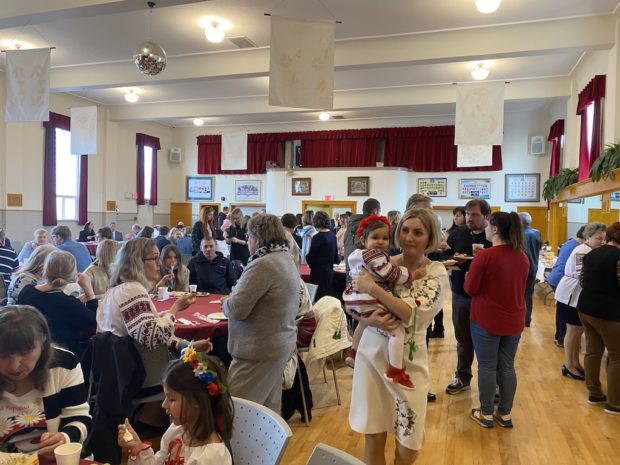
On Palm Sunday, I went to the service at St. John’s Cathedral and heard Zubristky preach a sermon about Jesus accompanying the community in their difficult time through the suffering of his passion during Holy Week.
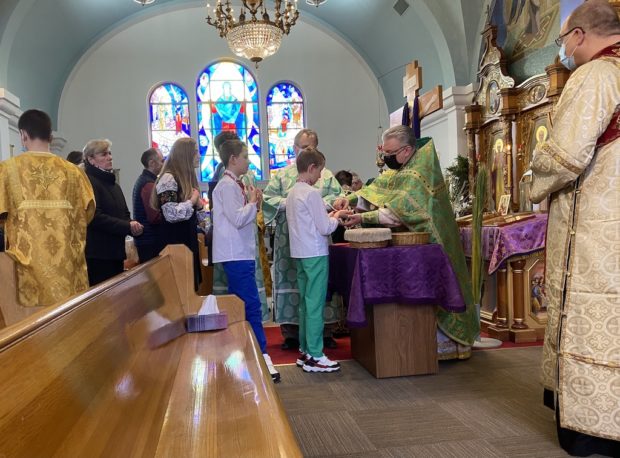
Late Sunday night, I sat at the airport welcome booth until 1:00am, waiting for arrivals from Ukraine. More than 300 have come since the war began, and many have joined relatives already established in Edmonton. But some have arrived at the airport without a plan, and without anyone to pick them up. The welcome booth volunteers have driven new arrivals to the Edmonton Inn, which is offering them free temporary accommodation, and then quickly matched them with volunteer host families.
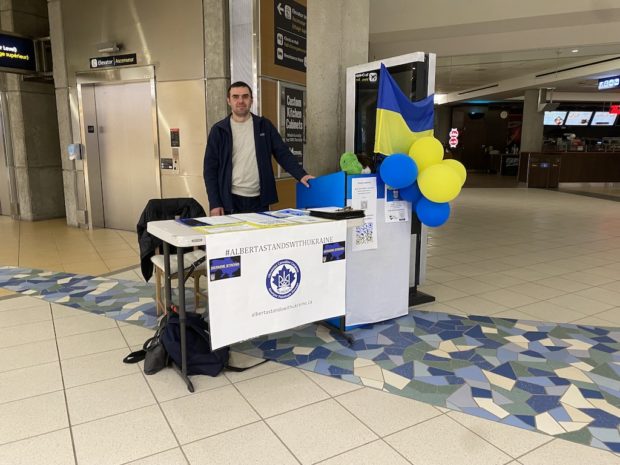
Iryna Polishchuk is in-between these two situations. In Ukraine, she was an elementary school English teacher. Her daughter lives in Vancouver. When Russia started bombing Ukraine, she was about to return home to Ukraine from a vacation in Greece. Her daughter, who lives in Vancouver, called her to tell her she must not return to Ukraine, but should come to Canada instead. Polishchuk flew to Vancouver, with only what she’d packed for Greece — no coat, no boots. (The weather in Edmonton is still quite cold at this time of year. It snowed twice while I was there.)
Polishchuk stayed in Vancouver for several weeks, but she and her daughter ultimately decided it would be best for her to go instead to Edmonton, more than 700 miles away. Since the Ukrainian community is bigger in Edmonton, she’d have a better chance there of finding a job. Polishchuk’s daughter’s long-distance partner lives in Edmonton, so she is staying with him while she looks for work. In the meantime, Ivan Lypovyk’s brother gave her a ride to a welcome event for Ukrainians at the Ukrainian National Federation building, and a woman she met on the Facebook page for Ukrainians in Edmonton offered to take her to the mall to help her find a coat. She’ll need one, as other Ukrainians who’ve arrived in Edmonton before here have found, but she’ll also have a warm community to sustain her.
Fleeing War, a Ukrainian Flock Arrives in Budapest
The spirit of Moses shepherds displaced Christians and Jews nearly 4,000 years later
BUDAPEST — It is not yet 10 in the morning when the Ukrainian refugee children, many of them accompanied by their mothers and grandparents, enter through the main doors of the Jewish Community Center in downtown Budapest. They are welcomed by volunteers from Israel, who are costumed in tunics and fake beards. One Israeli college-aged girl, Yona Michal, is dressed as Moses. She is about to perform a play on the Book of Exodus, where Moses saves the Jews from slavery in Egypt and the armies of the Pharaoh.
Less than one mile away in the 1,000-year-old Church of the Blessed Virgin Mary, a priest reads a different part of the Moses story. He recounts Chapter 21 of the Book of Numbers, when Moses was struggling to keep the wandering Israelites on the path, both physical and spiritual, laid out for them by God. The priest used this tale to emphasize the importance of keeping the faith in bleak moments, that God would heal them if only they looked to him for help.
In both instances, Moses acted as a shepherd to the faithful as they sought a new home after fleeing violence in their previous one. In Budapest, religious nonprofits are taking on the role of Moses, acting as a shepherd to Ukrainian refugees fleeing Vladimir Putin’s war.
Less than three months earlier, on Feb. 24, Putin began a brutal military campaign bombing multiple cities in Ukraine, including the capital, Kyiv. Since the invasion, almost 5 million people have left their homes, according to data from the United Nations High Commissioner for Refugees. Out of those 5 million, 530,000 have registered with the Hungarian government.
“We have joined forces to help refugees in any way we can, providing accommodation, clothing, supplies, whatever they need,” Marcel Kenesei, director of the JCC in Budapest said about the Jewish community’s contribution to Hungary’s response to the refugee crisis. “We also organize programs and we help them go to other countries like Israel or other European countries.”
While Kenesei speaks, an Israeli volunteer dressed up like a clown – complete with a red nose and rainbow-colored wig – is sitting down making balloon animals for young children around a plastic table at the JCC. The children squeal as the balloon slowly forms into its shape, and then deflates. As they play, most of their parents are sitting together, talking in hushed tones.
Kenesei estimates that the JCC has provided housing accommodation for 2,000 people just like the ones at the center that day, and resources to tens of thousands more. However, he said many do not stay in Budapest. Instead, they only spend a couple of days before flying to Israel.
“To get Israeli citizenship, that was an obvious choice for a lot of people,” Kenesei said. “The state of Israel decided to make it easier for Jews to enter, but the state of Israel decided to let non-Jewish people into Israel, so that’s an important piece of it.”
This crisis has caused a ripple effect of participation and activism within the Jewish community that Kenesei has never seen before. He said the JCC has worked with the American Jewish Joint Distribution Committee, the Jewish Agency and the Hungarian Jewish Federation.
“Organizations who have basically never spoken to each other, not to mention working together. They are the joint forces and cooperate in this crisis,” Kenesei said.
Many Ukrainian Jews, like Lyubov and her four-year-old daughter, Daniel, who withheld their last names for privacy reasons, do not want to stay in Budapest. Instead, they hope to travel to Israel where, according to Lyubov, it feels safer and there are no bombs. She chose Budapest instead of Poland, due to overcrowding.
New arrivals, Kenesei said, first go to the Budapest Olympic Center — called “BOK” by locals — an arena just 10 minutes from the nearest train station. There, they can get a warm meal, travel information and basic medical care. When the first bomb hit Kyiv eight weeks ago, government assistance for refugees fleeing to Budapest was practically non-existent.
Csaba Szabo, a member of the Catholic aid organization Caritas – the Latin word for “charity” – recalls the first few days of the crisis after Russia’s first airstrikes, how their expectations did not align with the real needs of the refugees.
Szabo agreed with Kenesei and said many aid organizations expected the incoming Ukrainians to seek shelter in Hungary until the end of the war. In reality, many Ukrainians chose to only stay in Budapest for a day or two before going elsewhere. The hotels and houses meant to shelter them went unused, and many of the first refugees had to sleep in a cold train station while they planned the next leg of their journey.
“The [relief center at the] stadium is a result of all the lessons we learned from those first days,” Szabo said.
Departure times for buses to the train stations are projected onto the wall in the stadium, as tall as the black and white banners honoring past Hungarian Olympic gold-medalists that stood next to them. Waiting areas are segregated by destination and marked out in Hungarian, Ukrainian and English. After the volunteers realized how many refugees fled with their four-legged companions, they set aside a roughly 100-foot square area for pet supplies.
The volunteers at BOK reported to Szabo that common language is the biggest issue they currently face. Many of the Ukrainians who could speak Hungarian came from the western border regions and arrived in the first few days, and have already left the city for their final destination elsewhere in Europe or in Israel, he said.
Now, new arrivals are coming from further East in Ukraine, Szabo said, and are unlikely to speak Hungarian at all, much less understand it well enough to navigate an unfamiliar city.
Szabo said finding volunteers who speak both Ukrainian and Hungarian are rare.
“Our job is different when we have the translators here,” he said.
According to Szabo, the language barrier has already caused misunderstandings about what documentation refugees need in order to receive aid. When translators are not available, aid workers must rely on English as a common language. For Jewish aid organizations, Kenesei said that Hebrew is often used instead.
Language is not the only reason Ukrainians are not keen to stay. Hungary leans towards authoritarianism, with a political system described as “illiberal democracy.” It is the only European Union nation to be rated as “partly free” by the media watchdog Freedom House.
A source who requested anonymity out of fear of government retaliation said that any entity that receives government funding is unable to talk about politics publicly, or they might lose their funding – or worse, become a target of the state-backed media.
Aid organizations cannot simply forgo government funding. A package of laws from 2018 requires any organization that aids migrants to secure a license from the government in order to operate. Doing so without a license can result in tax audits, investigations and fines, putting aid organizations in a bind.
This at least allows religious aid organizations to give more extensive care to the refugees that do arrive.
One of these aid organizations is the Jewish Charity Hospital, located just miles away from BOK, on the Pest side of the city. A couple exits on the highway away, the hospital is nestled next to a Jewish day school, surrounded by trees just beginning to grow leaves after a long winter.
In the lobby of the hospital, glass doors open to a recently renovated white tiled entryway. Even with the doors shut, the sounds of young children playing at recess combined with the high-pitched clicking of nurses’s shoes filled the hallway.
After the Holocaust, Stalinism and the state-mandated atheism of the Soviet Union, the Jewish Charity Hospital in Budapest is the only Jewish hospital left in Europe.
One of its patients, a Hungarian Jew named Pal Fezekas, is a Holocaust survivor. He spent the war hiding in the attic of a French aristocrat in Paris, where he was born. Now, Fezekas lives in a room with three other men on the second floor of the hospital. In his bed, he keeps cigarettes and his cell phone.
Downstairs, in the middle of the afternoon, Fezekas sat in a wheelchair, chain-smoking his cigarettes in the parking lot of the hospital. He said out loud what many were afraid to say – what is happening right now with Putin and Ukraine does not feel much different than what happened back then.
“The war is the continuation of the wars that happened in the twentieth century. There is war, always some war in the world,” he said. “I was five years-old when World War II ended, a kid like that does not really understand what a war means, especially when you spend your life in a protected environment, and yet, I knew what was happening. I was very much aware.”
Fezekas said both Putin and Hungarian Prime Minister Viktor Orbán are mass murderers. His comments are a result of not only Orbán’s hostility towards migrants, but also the support and apparent friendship between the two leaders. Orbán has personally supported Putin’s war by buying Russian gas and blocking military aid to Ukraine. After living in the hospital for the past two months with other Holocaust survivors, Fezekas said it was Orbán’s recent re-election that made him physically feel worse.
As Fezekas spoke, he pointed at his recently amputated right leg, tied up in a pair of white-turned-gray pajama pants to emphasize how his physical health has been impacted by the beginning of Orbán’s fourth consecutive term.
The Jewish Charity Hospital, where Fezekas lives, has also provided medical resources for the Ukrainian refugees since the war began in February. The hospital’s CEO, Dr. Assaf Shemesh, estimated that it has provided medical care to more than twenty Ukrainian patients a day.
Shemesh told one story, while sitting at his desk in his top floor office overlooking the parking lot Fezekas was in, about a hotel where many refugees are living that had a gastroenteritis outbreak. Some children became so dehydrated they had to be sent to the Emergency Department. The hospital also struggled to fill prescriptions for medications that are available in Ukraine, but not approved in European Union countries, including Hungary.
“Mostly the people coming to our clinic are very old and very exhausted,” Shemesh said. “They didn’t want to go to Israel, but now they have no other chance. They have nowhere to go back to.”
Lyubov and her young daughter are among the millions of displaced people, wandering through a complex and foreign system while searching for a new home. Some, like the Israelites in the Bible, want to reach their promised land as soon as possible, despite the danger. Lyubov hopes to stay in Budapest while she gets her and Daniel’s travel documents sorted out, which can take weeks. Either way, refugees must rely on the continued help of religious aid organizations like the JCC and Caritas.
“You know, it’s difficult to say because of course she’s enjoying Hungary” Lyubov said of her daughter. “ It’s a very beautiful city but we changed four countries in two days.” Ultimately, she added, her daughter “needs stability, and she needs a home.”
Lyubov has little left to hang onto except what she could carry with her from Ukraine. Despite the differences in language, culture and heritage, there is at least a shared experience of hearing the scripture and finding comfort in the story of Moses.
A Life of Double-Belonging: Some Religious Leaders Practice Two Faiths
In a dimly lit Roman Catholic church on a recent Monday night in Manhattan, around a dozen congregants sit in the pews watching the Rev. Michael Holleran as he leads them in what is known as contemplative prayer. During this kind of prayer, one word of the congregant's choosing is silently repeated over and over again. There is some singing, and some prayers said aloud throughout the hour-and-a-half-long worship. Every so often Holleran rings a bell three times, which is meant to awaken worshipers from “sleep and into a consciousness of God’s presence.” This form of prayer is often compared to meditation due to the silent repetition of one word and the focus required. Peace, love, truth; these are just a few of the word choices worshipers might repeat. If their mind wanders, they are instructed to return to the word.
Contemplative prayer was adopted by some Catholics in the 1970s and takes inspiration from faiths like Buddhism, so it’s no wonder that in addition to being a Catholic Priest, Michael Holleran is also a Buddhist Sensei.
Michael Holleran serves as the priest at the Church of Notre Dame, a Catholic church in Morningside Heights, but once a week he leads a Buddhist Zen Meditation session over Zoom. He practices double-belonging, a term coined in 2009 by Paul Knitter who wrote a book titled “Without Buddha, I Could Not Be a Christian.” Knitter is a major influence on many Catholics who subscribe to Buddhist ideology. He insists the two faiths do not conflict with one another. The teachings in his book have spread to some, including professors of religion like Chad Thralls of Seton Hall University and Catholic priests like Robert Kennedy, based in New Jersey. They too have followed a life of double-belonging as outlined in Knitter’s book.
Buddhism and Catholicism have been compared to one another in the past. In 1870, The Atlantic, an American magazine that was first published in 1857, reported on the similarities between the two faiths. “The Tibetan lama listened respectfully to the Jesuit priest and replied, ‘Your religion is the same as ours,’” reported Lydia Maria Child.
Buddhism originated around 1,500 years ago. Founded by Siddhartha Gautama the faith spread from India to the rest of Asia and eventually the world. In the tradition life is seen as a cycle, entailing suffering and rebirth. Finally, one can achieve enlightenment and break the cycle. Catholicism traces its roots to Palestine in 30 CE following the teachings of Jesus Christ. Catholics believe that if you confess your sins and base your life around the 10 Commandments you’ll go to Heaven after you die. Some Catholic theologians insist that the two faiths do not conflict, but in fact, build on one another.
As Holleran has explored his religious identity, he says he has found a “vibrant synthesis” between Buddhism and Catholicism.
“I don't see any conflict among any of these traditions,” he said. “If you're actually going deep enough into what they're really all about, that is to say, finding union with God, making the world a better place, transformation of your own consciousness, etc.”
For Holleran, this approach is specific to Catholicism and Buddhism and doesn’t necessarily extend to other faiths like Judaism and Christianity. A joint practice of those faiths might be harder to fit into the double-belonging theme.
Raised as a Roman Catholic, Holleran, 72, joined the Jesuits at Fordham University, where he took a course in various religions and learned about Buddhism. Holleran eventually became a Carthusian Monk in France, a contemplative order. Today, as the priest at the Church of Notre Dame, he keeps his two faiths separate, that is until he leads the Dragon’s Eye Zendo Wednesdays on Zoom. During Zen meditations, Holleran mentions Catholic scripture or figures but doesn’t mention Buddhism during Catholic services. Some people attend both the contemplative prayer and the Zen meditation each week like Chad Thralls.
Professor Thralls, who teaches at Seton Hall University, a Catholic institution, says that many of his students are excited to learn about faiths other than Catholicism. Therefore, whenever he involves Buddhism in his coursework, students are engaged. Holleran and Thralls cite theologian Paul Knitter as a source of inspiration in their journeys with double-belonging.
The Coining of the Term
Knitter, 83, began studying to be a priest in Rome during the Second Vatican Council, a major reexamination of Catholicism that took place in the 1960s. At the time, the Catholic Church encouraged students to learn about other religions in addition to Catholicism. This started his interest in other faiths and he began to question Christianity as the “superior religion.” Eventually, this inspired Knitter to write a book about how Christianity is just one of many traditions. From then on Knitter said he understood Christianity from a Buddhist perspective.
“It was as if I was wearing Buddhist glasses while reading Christian texts,” he said. Knitter was ordained a Catholic priest but then left the priesthood and became a professor of theology.
Knitter has questioned whether he is Christian or Buddhist in the past. Today, he is a member of a Christian parish and a Buddhist community. On the other hand, his faith identity has been a controversial topic in the academic community. Knitter says he has faced some backlash for preaching double-belonging. Many religious scholars think you cannot be both, but Knitter disagrees.
“Religions need each other to understand themselves,” he said.
This inter-religious study is called comparative theology, and it is more broadly accepted now in mainline Christianity. Knitter suggests this is likely because of the intercultural world we currently live in. In the 1980s Knitter and his peer, John Hick proposed a pluralistic understanding of religious diversity or as Knitter puts it “a pluralistic understanding of the world's religions.”
During one of Chad Thralls’ recent lectures at Seton Hall University, he explained the first chapter in Knitter's book to the students, then asked them some questions to see what they thought of it. He references Knitter each semester he can. To a room full of undergraduate students, all raised Catholic, he presents this prompt: “In the book, Knitter notes that one of his students questioned whether he was ‘spiritually sleeping around’ by practicing both Christianity and Buddhism. Is Knitter cheating on Jesus?” During that class discussion, Thralls says none of his students believed Knitter was.
Not every Catholic is on board with double-belonging and the ability to whole-heartedly practice two faiths. Another Catholic priest, the Rev. John D. Dreher, was outspoken about the matter in an article for Catholic.com. For him, the two are incompatible.
“In Catholic teaching, all men are creatures, called out of nothingness to know God. All men are also sinners, cut off from God and destined to death,” he said. “Eastern religions, in contrast, lack revelation of God as a personal Creator who radically transcends his creatures. Though possessing many praiseworthy elements, they nonetheless seek God as if he were part of the universe, rather than its Creator.”
Still, Holleran, who doesn’t mention Buddha during his Catholic services, is fairly open about his practice of both religions. His personal website plainly states his credentials as a former Carthusian Monk and Priest and as a Sensei. It also references Knitter and double belonging.
Holleran says he hasn’t received much backlash from anyone about practicing double-belonging. He continues to lead Catholic services and Zen meditations. Additionally, he gives lectures about the intersection of the two faiths to students every now and then.
Of the potential for backlash, he said “Mystics have been crucified in all traditions, not just Christian, Jewish, Muslim. They're always a problem, a danger because they challenge the limitations of the institution.”
The New York Archdiocese has not replied to repeated requests for comment about whether double belonging is something they support among their priests.
The Retreat
On April 10th and 11th, the University of Wisconsin-Madison held a retreat in which around 25 “Interfaith Fellows” from the university’s Center for Religion and Global Citizenry practiced a variety of faiths to better understand them. They met in person at Holy Wisdom Monastery, a Catholic Monastery of Benedictine nuns. During the retreat, they experienced contemplative prayer, Zen meditation, and Tibetan meditation, among other practices.
Paul Knitter was one of the event organizers. He says they focused on similarities and differences between faiths but argued that many have similar goals.
“Through the contemplative practice, we discover a larger self,” Knitter said. “We’re finding ourselves as part of a larger reality, which is called by different names. God, Nirvana, Allah, Gahe.”
Although none of the students definitely said they would practice double-belonging after the retreat, many said it was an enlightening experience.
In an ever-globalizing world, religions from the East and West build on one another, according to those who practice double-belonging. Scholarship has further spread this idea. “Without Buddha, I Could Not Be a Christian” has outsold all of Knitter’s other books. He said he gets thank you emails once a month, even now. Regardless, Knitter doesn’t think most people will ever become pluralistic in faith, but they may become more open to the idea that some are. “People might be more open to learning from others,” he said.
A version of this story has been republished by Religion News Service.
How the Synagogue Hostage Crisis Changed the DNA of Colleyville, Texas
As Congregation Beth Israel reopens, interfaith efforts deepen and houses of worship intensify security measures, adapting to “a more violent world.”
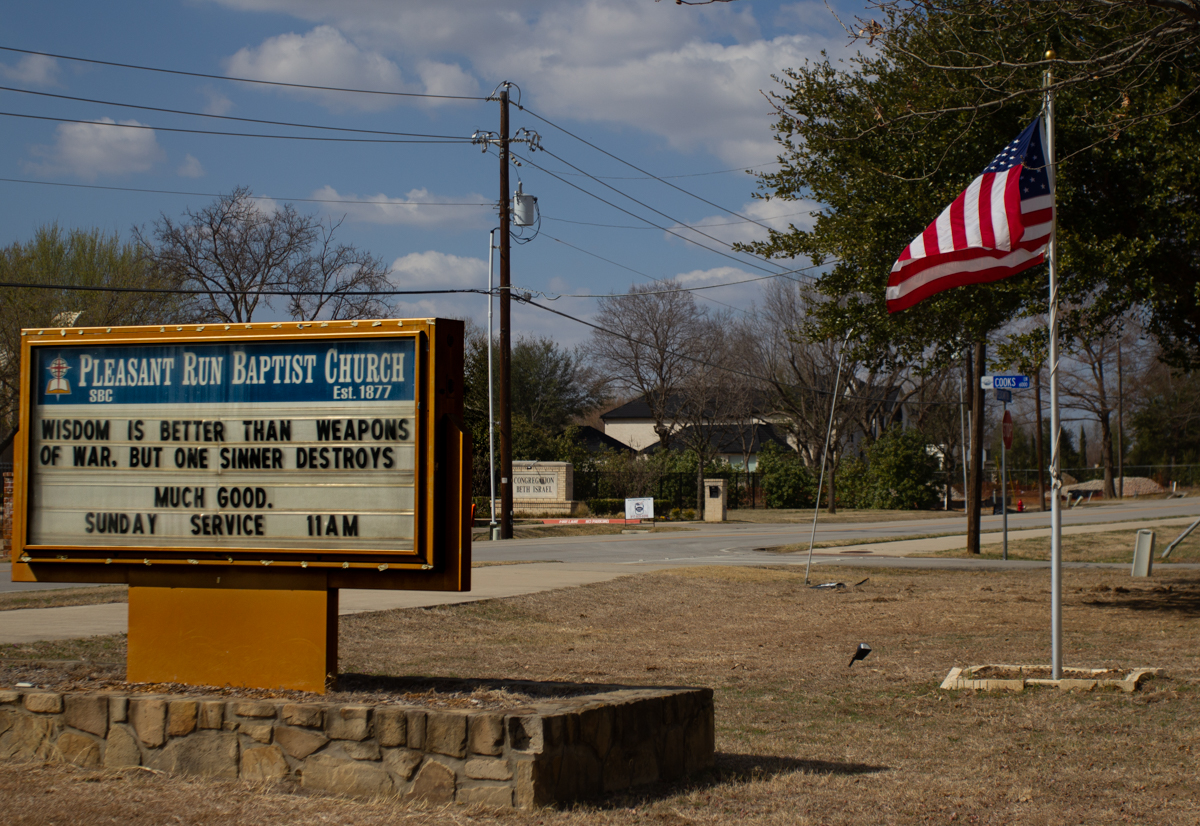
COLLEYVILLE, Texas – On Jan. 15, Colleyville, a small suburb just miles from the Dallas-Fort Worth Airport, was thrust into the national spotlight as a gunman, armed with a pistol, took four people hostage for 11 hours in the Congregation Beth Israel synagogue. All four hostages escaped unharmed before the suspect was shot, authorities said. The FBI labeled the incident as a terrorist act and hate crime.
But this acutely religious North Texas town with 28 houses of worship in its 13 square miles, did not retreat in fear and suspicion. Instead, it reconceived of the terror attack as a beacon of hope. Since the live-streamed standoff, religious leaders in Colleyville mobilized to ensure the safety of their believers and buttress the area’s robust interfaith system.
After nearly three months, the synagogue, which has been closed as a crime scene, is reopened to its 150 members on April 9. Since the incident, the congregation was hosted by the First United Methodist Church of Colleyville, one mile away. Now that it is back in its home, Congregation Beth Israel will have a police presence at every event. For Colleyville’s Jewish believers like Howard Rosenthal, former president of the Beth Israel Congregation, restarting services in the synagogue with reinstalled bulletproof windows feels like “moving forward.”
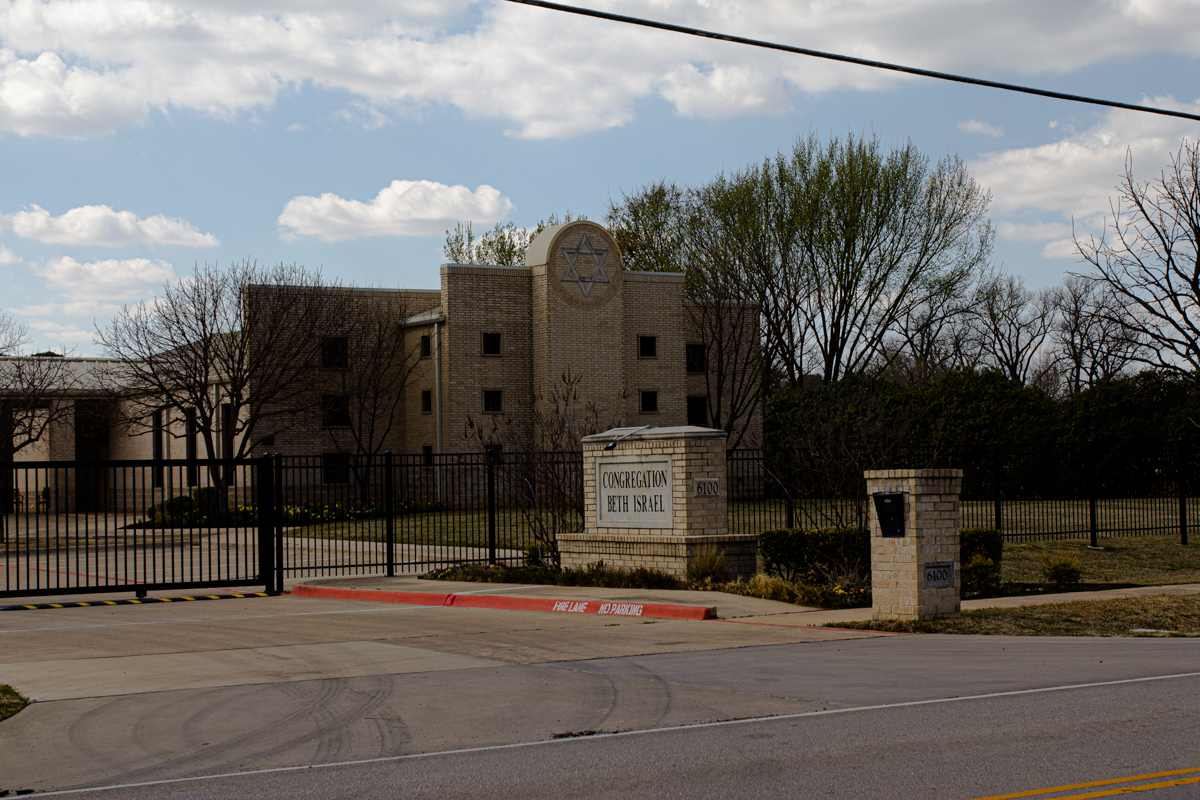
Interfaith activists in Colleyville, which is overwhelmingly comprised of Christians, said they want to set the record straight, referring to what they call the town’s mischaracterization in national press outlets. The scandals plaguing Dallas-Fort Worth have garnered media attention after the 2021 Capitol insurrection (which involved residents from DFW) and last year’s Critical Race Theory controversies at Colleyville public schools. Despite North Texas stereotypes, 21 religious community groups have been building interfaith bridges for four years under the umbrella of Peace Together, which was founded after racial and religious tensions unleashed at a 2017 “Unite the Right” rally in Charlottesville, N.C.
“We will have a safe, loving and committed community so we can go forward and not focus on the past,” said Rosenthal.
Having lived in DFW for 19 years, Rosenthal leads Peace Together and organized interfaith healing ceremonies after Jan. 15. Rosenthal was teary-eyed while recalling how interfaith leaders rushed in to help during and after the crisis.
As Rabbi Charlie Cytron-Walker of Congregation Beth Israel wrote in The New York Times:
“My congregation and I received an outpouring of love and support from strangers. If we begin with that love of the stranger, but offer it not in response to violence, but encouraged by empathy, we might just change our world.”
Everyone from Muslims to Catholics to Mormons stepped up. The Colleyville Texas Stake of The Church of Jesus Christ of Latter-day Saints, a member of Peace Together, has a deep respect for people who worship in different ways because Mormons have a history of persecution, said Leslie Horn, the Media Specialist at the church. Horn described Jan. 15 as a defining violation for her church. Still, the subsequent press coverage “missed a lot of the good,” she said.
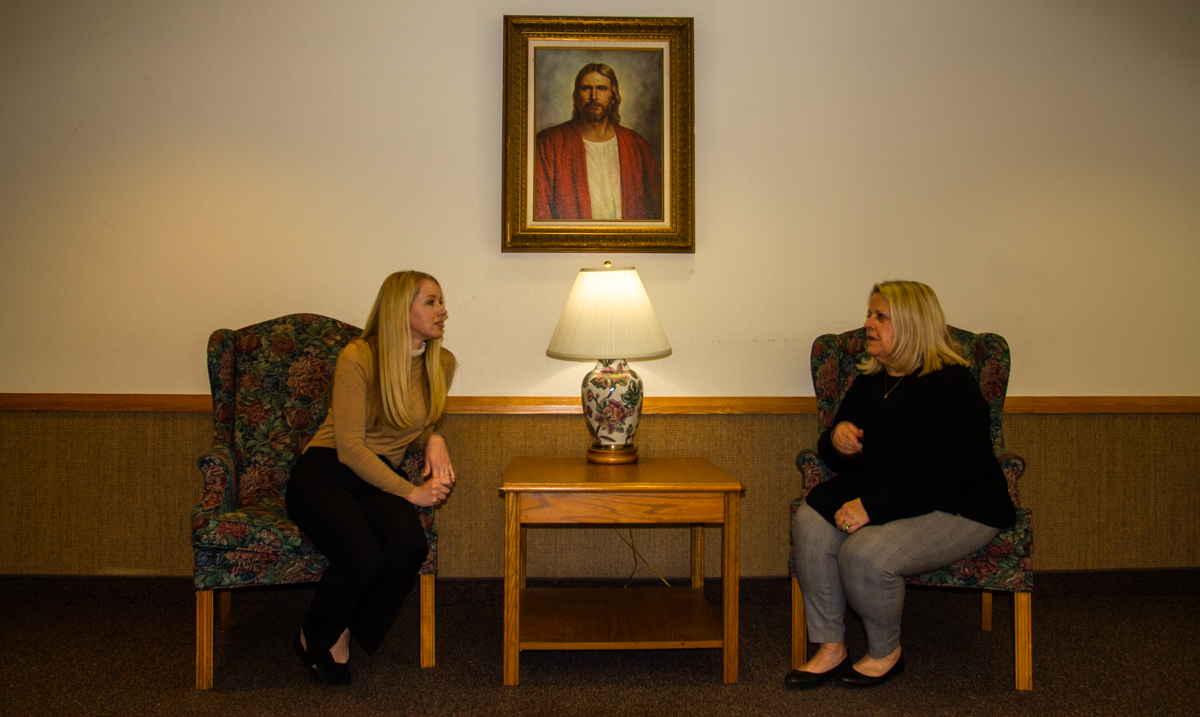
“In Texas, there tends to be this belief that we aren't diverse in thought, people and faiths,” Horn said. “But if you've spent any time living here, you quickly realize that’s not true. If you know anything about interfaith work, you know Colleyville is a leader.”
Horn said she could not fathom the juxtaposition of savagery in a sacred space. Horn, like so many religious observers in Colleyville, found herself in disbelief and kept asking herself, “Why Colleyville?”
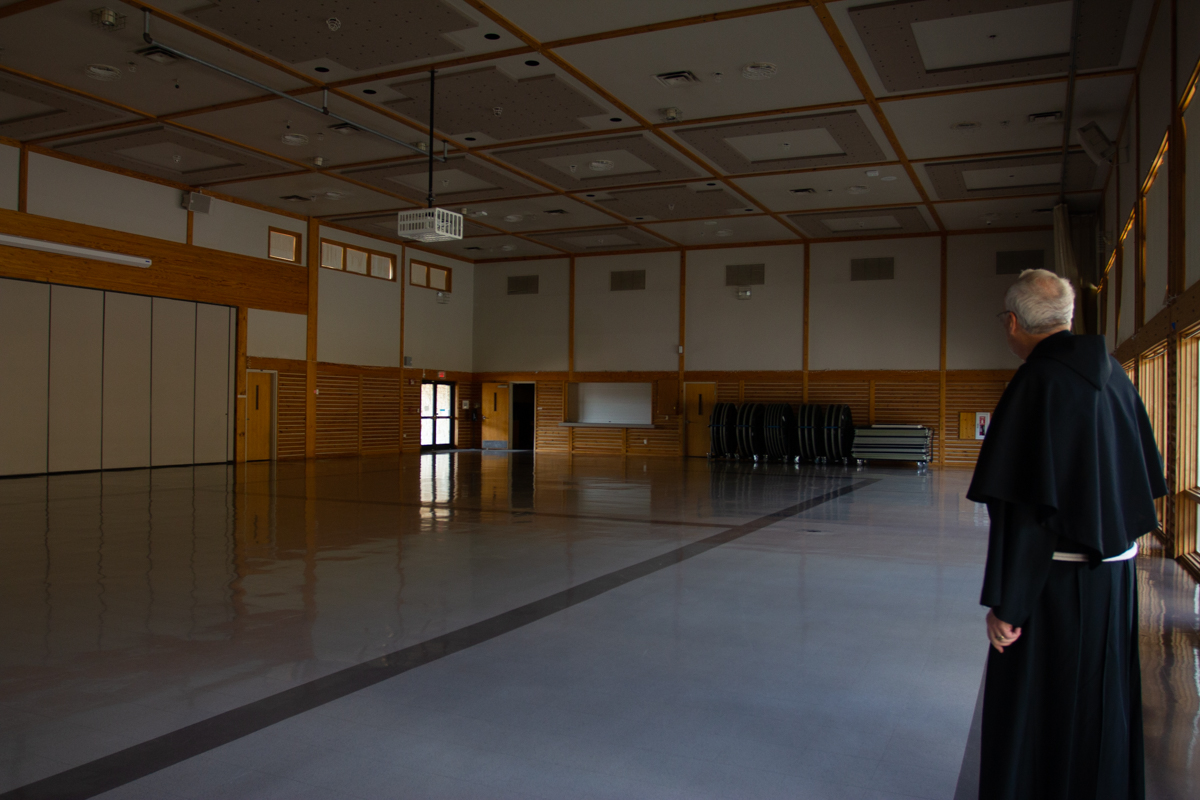
Rev. Michael Higgins, the senior priest at Good Shepherd Colleyville, shared Horn’s shock. Even though the standoff was “hectic and surreal,” Good Shepherd Colleyville jumped into action. For ten hours during the standoff, Higgins’ church, just one block away from the synagogue, hosted the press, the four spouses of the hostages and the local police. After the dust settled, Good Shepherd continues to seriously consider beefing up its security measures, said Higgins. Still, he refused to cancel Sunday services the next day, opting to pray for the town.
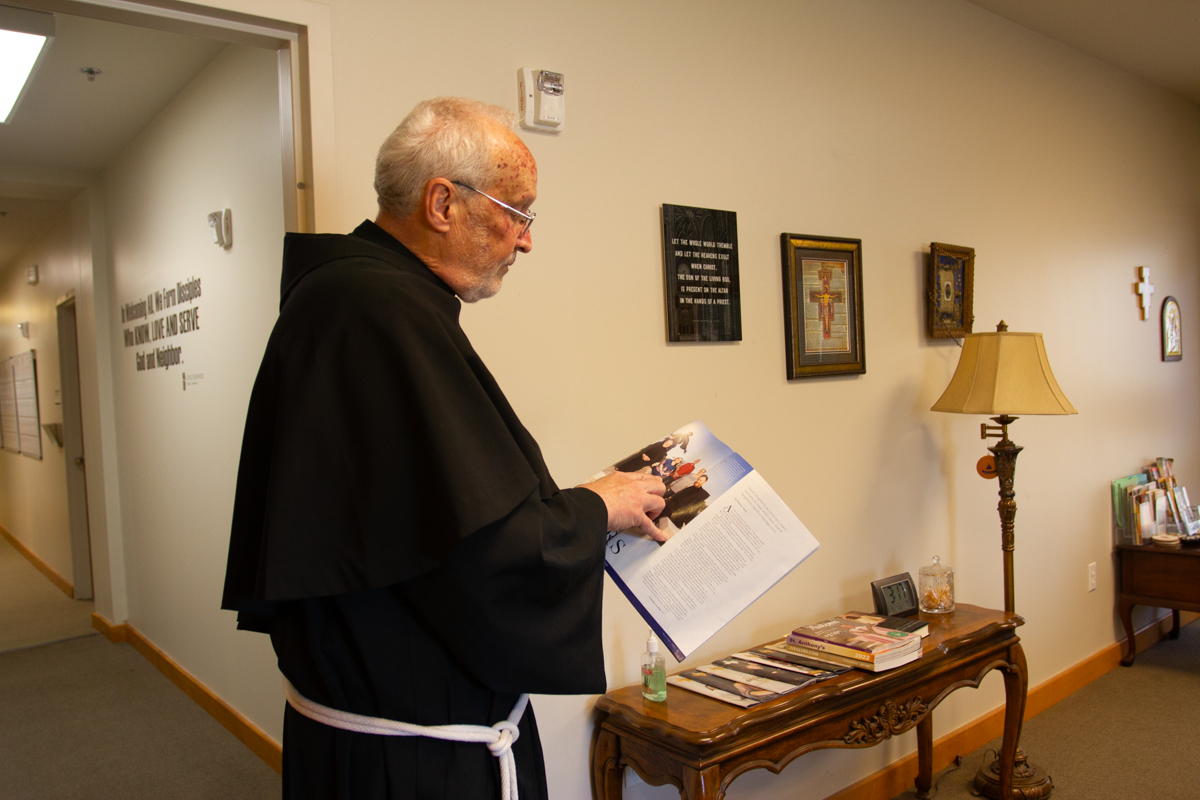
“Despite all the evidence to the contrary, God loves us,” Higgins said.
It is unfortunate that an event like this would be the catalyst for the country to be introduced to Colleyville. But January 15, Higgins said, was an immediate rallying of all faith traditions, which brought to light the reality of the tight community in Colleyville. Higgins has led the interfaith alliance in Colleyville since 2020.
“We were just trying to be of service,” Higgins said. “This shouldn't be special.”
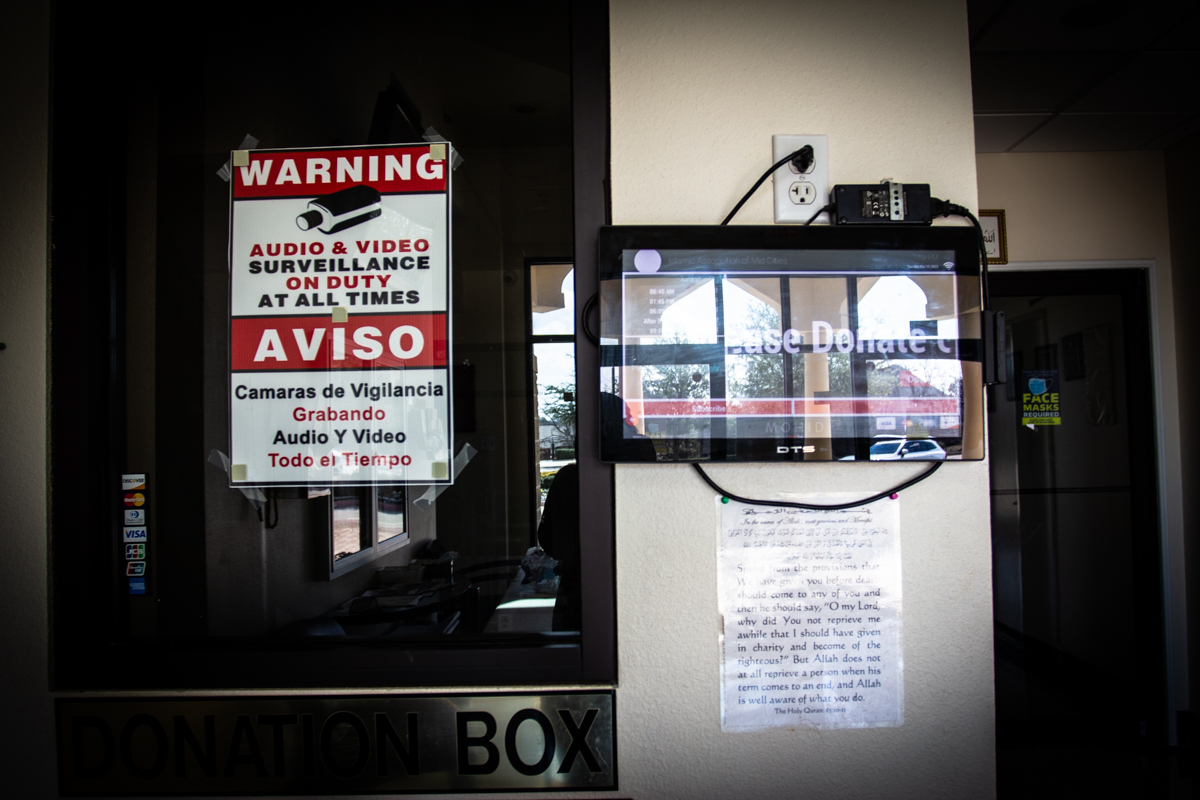
Abdul Rashid Khan, a founding member of Colleyville Masjid, said his house of worship is no stranger to the eerie sensation of looming danger. His gated mosque has had security since Sept. 11, 2001, and reactively increased its surveillance measures since Jan. 15. Khan, a friend to hostage Cytron-Walker and participant in interfaith meetings, said he could easily imagine a similar crime happening in his mosque. To cope and maintain hope, Khan has thrown himself into interfaith work.
“Our prophet Mohammed used to visit other religious spaces so that he could set an example of how his faith should be respected,” Khan said. “We follow that example.”
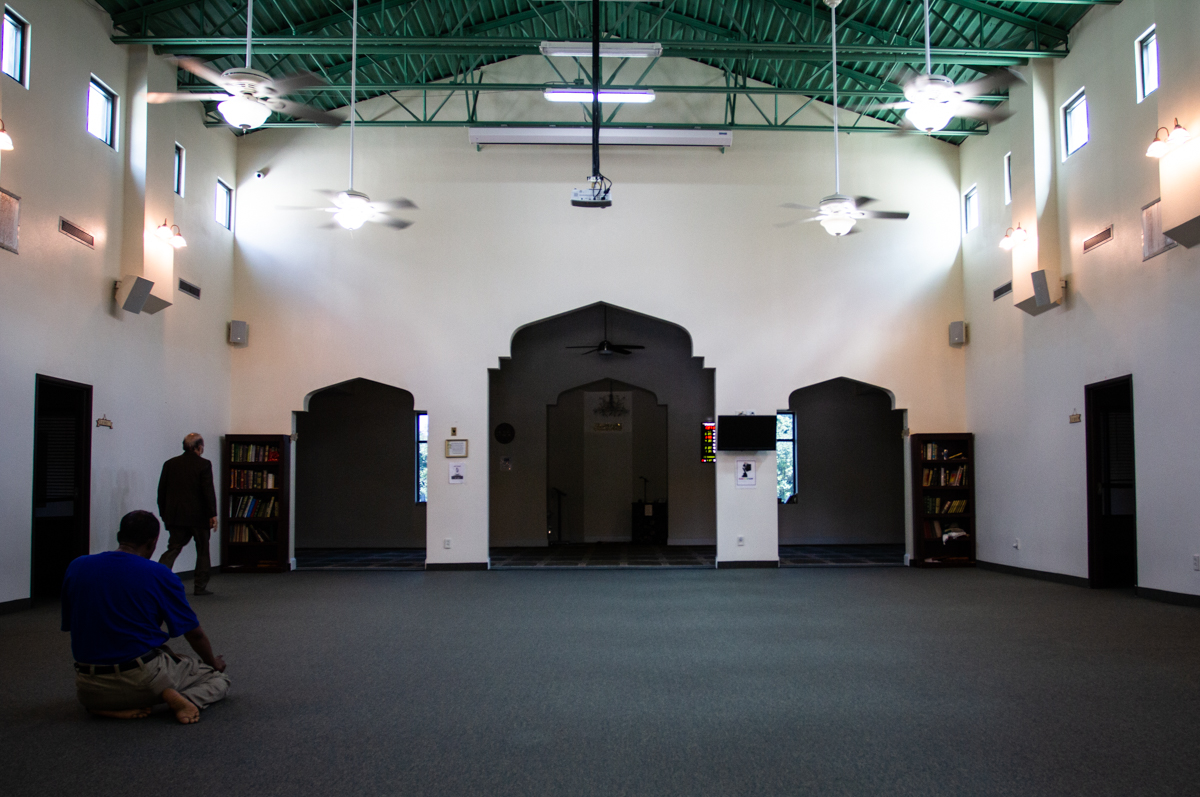
Katie Newkirk, a pastor at First United Methodist Church of Colleyville, reviewed her church’s safety policy after the “defining moment” of Jan. 15, installing new security systems and implementing training sessions for church staff. Still, she said Colleyville’s transformation in the past few months is twinged with optimism as local comradery has outshone religious differences.
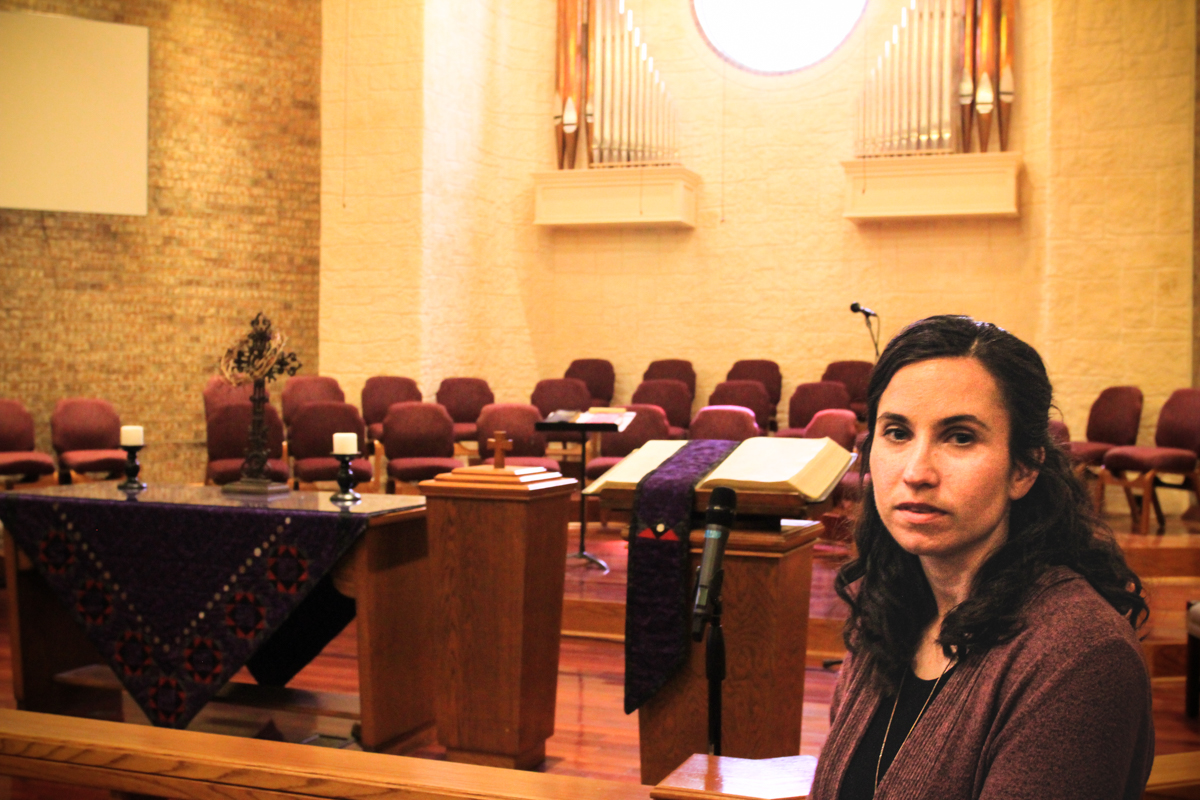
“It’s been a beautiful time to come together,” Newkirk said. “I don’t think God causes bad things to happen, but God brings good outcomes from messed up situations.”
